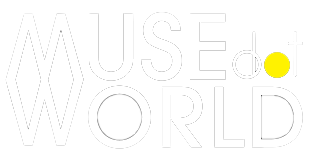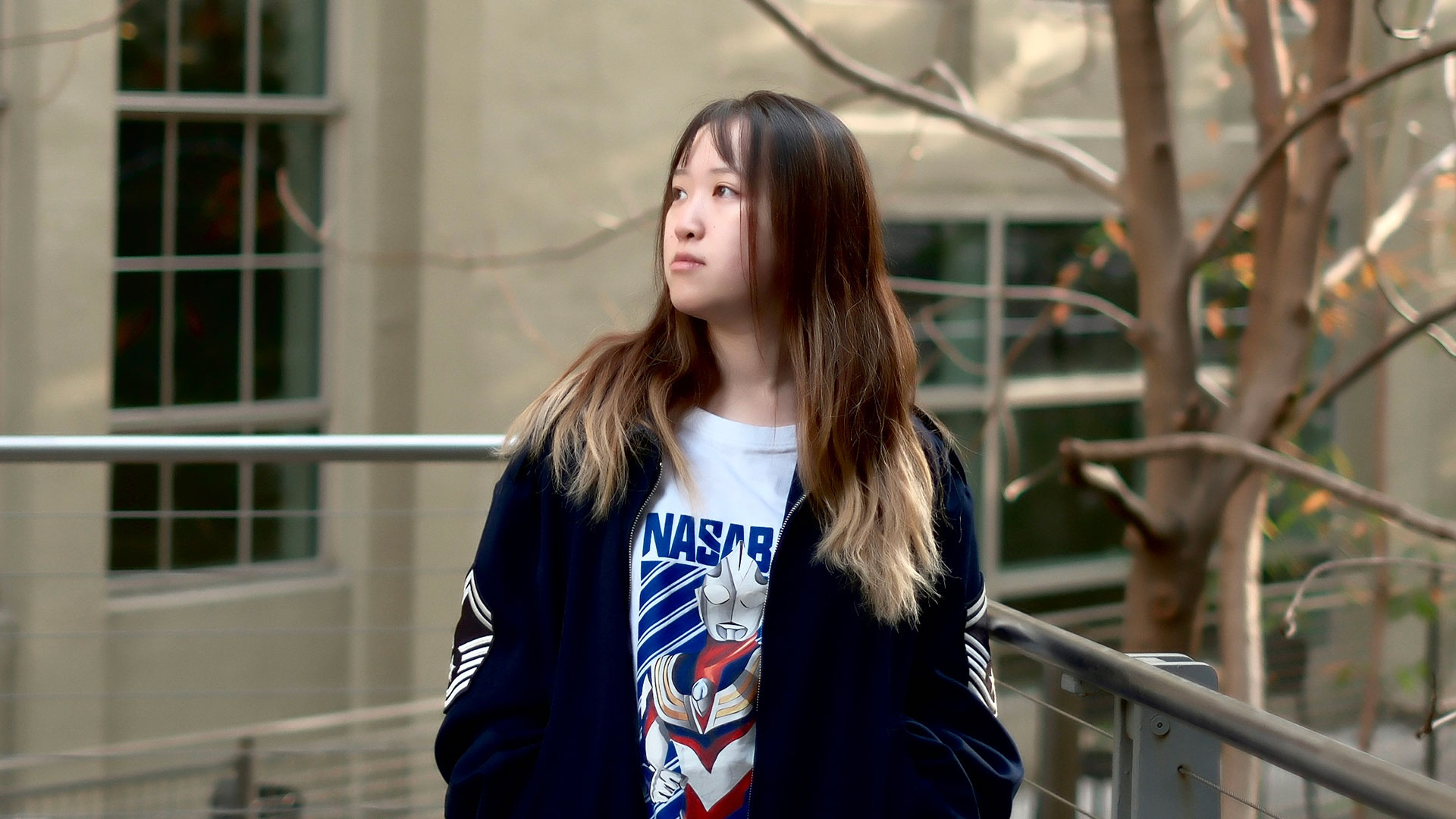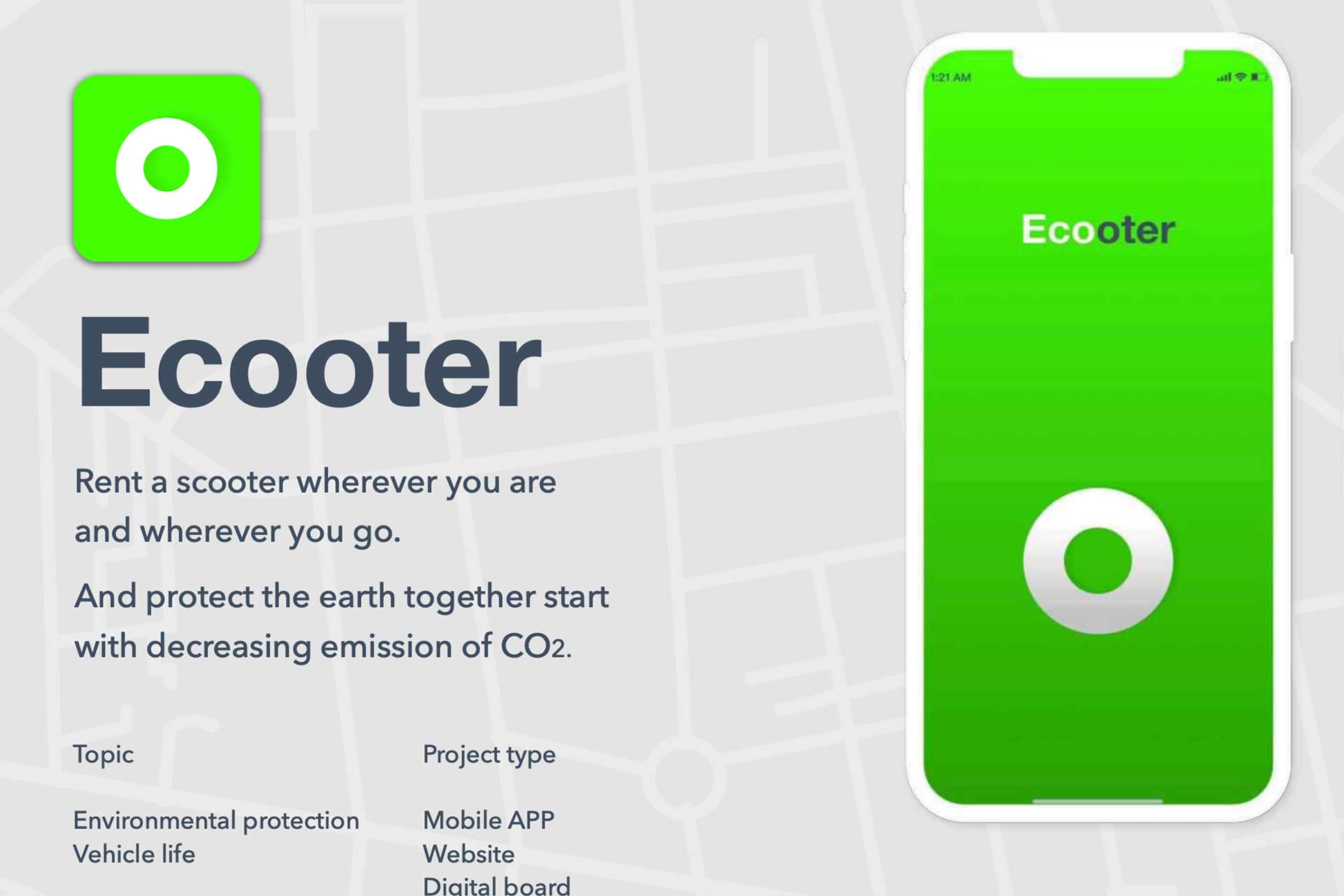Qianzhuo Zeng Connects Young Riders to Sustainability with Ecooter

The Work of Zi Zhuo in Sci-fi Gallery New York and PRISM with NAC Architecture
April 22, 2025
Mingyong Cheng’s Beyond Characters: The Unseen Labyrinth A Journey Through Dyslexia
April 22, 2025Qianzhuo Zeng
Qianzhuo Zeng (Elaine) is a independent designer and artist based in the U.S. With a background in UX and service design, she moves beyond traditional roles, embracing creative independence and a multidimensional approach to problem-solving. Her work blends function with emotional and intellectual depth, treating design as a form of artistic expression.
I am Qianzhuo Zeng (Elaine), a freelance designer and artist based in the United States. While my expertise lies in UX and service design, I see myself beyond conventional professional titles—as an artist who embraces creative independence and a multidimensional approach to problem-solving.
My design philosophy is deeply intertwined with artistic expression, prioritizing not only functionality but also the emotional and intellectual resonance of an experience. Winning the MUSE Design Awards is both an affirmation and an inspiration, reinforcing my belief that design should transcend utility to foster meaningful human connections and social impact.
My creative journey has been profoundly shaped by my early immersion in art and music, particularly my years of studying piano. Music instilled in me an intrinsic understanding of rhythm, composition, and emotional depth—elements that seamlessly translate into my design process.
Just as a composer selects specific instruments to evoke moods, I carefully choose the most suitable medium, whether a digital interface, a service system, or an interactive experience, to convey my vision with clarity and depth.
I firmly believe that creativity should not be constrained by rigid disciplinary boundaries. Instead, form should emerge organically from the essence of an idea, allowing artistic freedom to guide both conceptual exploration and innovation. By challenging conventional frameworks, I strive to craft work that is not only purposeful and thought-provoking but also deeply human at its core.
Being recognized is both an honor and a validation of my creative philosophy. More than an achievement, this award serves as an inspiration—a reminder to continue pushing creative boundaries and challenging conventional perspectives. It motivates me to further explore the intersection of art and design, using my work as a platform to engage, empower, and connect with people on a deeper level.
At its core, design is a dialogue between creator and audience, and receiving this award signifies that my work has resonated with others. It strengthens my commitment to innovation, encouraging me to keep refining my approach and striving for designs that are not only aesthetically compelling but also socially impactful.
As an independent designer, winning is not just a professional milestone but, more importantly, a validation of my artistic philosophy. It reaffirms my belief that design is not merely a means to fulfill external demands but a medium of self-expression, intellectual exploration, and emotional resonance.
This recognition strengthens my commitment to treating design as an extension of art—one that transcends functionality and engages with deeper cultural and humanistic dimensions.
Rather than viewing this achievement as a stepping stone within a conventional career trajectory, I see it as an encouragement to further challenge established norms and refine my creative language. It affirms that design can be deeply personal yet universally impactful, that independent artistic vision holds its own significance and that authenticity in creation will always find its audience.
More than an external recognition, this award is a dialogue—one that assures me that the pursuit of artistic integrity and conceptual depth is worthwhile. It inspires me to continue pushing the boundaries of design, not to fit into existing frameworks but to expand them, allowing space for a more poetic, introspective, and meaningful approach to creation.
Experimentation is at the core of my creative process—it allows me to challenge assumptions, explore unconventional solutions, and refine ideas through iteration. Rather than adhering to rigid frameworks, I see design as a fluid and evolving discipline, where experimentation fosters deeper engagement and unexpected discoveries.
A key example of this is my award-winning project Ecooter, which reimagines urban mobility for young people by encouraging the transition from gas-powered cars to electric scooters. The project itself was a continuous process of experimentation, from conceptual development to user engagement strategies. Instead of merely promoting scooters as an alternative mode of transportation, I explored ways to make sustainability feel personal and interactive.
The app, for instance, doesn’t just facilitate scooter rentals—it visually quantifies the CO2 emissions saved with each ride, turning an abstract environmental benefit into a tangible, daily impact.
The inclusion of billboards in high-traffic areas was another experiment aimed at integrating digital and physical spaces to create a more immersive, city-wide conversation about eco-conscious travel. Through Ecooter, I realized that experimentation is not just about aesthetics or technology—it’s about shaping behaviors and perceptions.
By testing different approaches, I crafted a system that not only provides a functional service but also fosters a sense of environmental responsibility and collective action. This project reinforced my belief that design, when approached with curiosity, can go beyond solving problems to inspire meaningful change.
One of the most unusual sources of inspiration for my design work comes from music—specifically, the structure and emotional depth found in Romantic-era piano compositions. Having studied piano for years, I’ve always been fascinated by how composers like Chopin and Liszt use rhythm, contrast, and dynamic progression to tell a story without words. This idea of "narrative through sensation" deeply influences my approach to design.
For example, in my Ecooter project, I thought about how movement—both in music and urban mobility—can create an emotional and immersive experience. Just as a musical piece builds momentum and evokes feeling through its progression, I wanted Ecooter to do more than just function as a transportation service.
By integrating real-time CO₂ savings tracking and city-wide billboard messaging, I aimed to compose an experience where users feel connected to a larger environmental movement, much like how a recurring musical theme ties together a symphony.
This experience reinforced my belief that design is not just about visual form or usability, but about evoking emotions and shaping perceptions. Drawing inspiration from unconventional sources—whether it's music, philosophy, or literature—allows me to create work that resonates on a deeper level, making even functional systems feel poetic and meaningful.
One of the most unusual sources of inspiration for my design work comes from music—specifically, the structure and emotional depth found in Romantic-era piano compositions. Having studied piano for years, I’ve always been fascinated by how composers like Chopin and Liszt use rhythm, contrast, and dynamic progression to tell a story without words. This idea of "narrative through sensation" deeply influences my approach to design.
For example, in my Ecooter project, I thought about how movement—both in music and urban mobility—can create an emotional and immersive experience. Just as a musical piece builds momentum and evokes feeling through its progression, I wanted Ecooter to do more than just function as a transportation service.
By integrating real-time CO₂ savings tracking and city-wide billboard messaging, I aimed to compose an experience where users feel connected to a larger environmental movement, much like how a recurring musical theme ties together a symphony.
This experience reinforced my belief that design is not just about visual form or usability, but about evoking emotions and shaping perceptions. Drawing inspiration from unconventional sources—whether it's music, philosophy, or literature—allows me to create work that resonates on a deeper level, making even functional systems feel poetic and meaningful.
Balancing client expectations with staying true to my own ideas is always a delicate process, but it's one that I approach through the lens of my artistic philosophy. I often say that I prefer to consider myself an artist rather than just a designer.
To me, design is not only about meeting external demands or creating something visually appealing, but it’s also about using creativity and innovation to shift perspectives, challenge norms, and create something that truly impacts the world.
When working with clients, I strive to understand their vision and needs, but I also see my role as a guide and a challenger. I believe that design should not only solve a problem but also inspire new ways of thinking.
I am committed to incorporating my core beliefs—particularly the philosophy of Polyfreedomism, which celebrates the freedom of exploration and expression—into every project. My goal is to create work that not only satisfies the immediate requirements but also encourages the client and the audience to think differently about the world around them.
Ultimately, staying true to my ideas doesn’t mean disregarding client expectations, but rather finding a way to align their goals with a deeper, more transformative vision. I believe that when both sides are open to exploration and collaboration, the outcome can exceed expectations and create something more meaningful than just functional design.
This balance is not about compromise but about using creativity as a tool to shape the future.
Working on my award-winning design presented several challenges, many of which stemmed from the tension between creating a functional solution and expressing my artistic vision.
One of the primary challenges was ensuring that the design not only addressed the practical needs of users but also conveyed a deeper message—something that could resonate emotionally and philosophically.
For example, in the Ecooter project, one of the biggest challenges was translating the concept of eco-friendly travel into an experience that felt engaging and intuitive for users. I wanted the app, website, and billboards to do more than simply provide a service; they needed to inspire users to reconsider their daily choices and connect with the larger environmental movement. This required extensive research, testing, and iteration to ensure the messaging wasn’t just clear, but emotionally compelling.
I approached these challenges by embracing my philosophy of Polyfreedomism, which advocates for the freedom to explore and innovate without being constrained by conventional expectations. I remained committed to my belief that design is not just about function, but about shaping perceptions and inspiring change.
This mindset helped me push through moments of uncertainty, and I found that overcoming these challenges ultimately led to a more meaningful and impactful outcome.
The next big challenge was staying true to my vision while delivering a solution that met the client's needs. However, by embracing ambiguity and the creative process, I was able to craft something that not only fulfilled its purpose but also conveyed a sense of purpose and transformation.
When I hit a creative block, I often turn to the things that inspire me most—philosophy, literature, history, and music. These fields offer a wealth of ideas and emotions that fuel my creative process, allowing me to step away from the immediate pressures of a project and reconnect with a broader sense of purpose and perspective.
Philosophy, for instance, helps me reframe the way I approach design. It reminds me that creativity is not just about producing something new, but about exploring the infinite dimensions of human experience. Literature offers me new ways to think about narrative and emotion, while history deepens my understanding of context and how design can impact culture.
Music, especially the structure and storytelling found in Romantic-era piano compositions, particularly influences my work. It teaches me how to express complex emotions through non-verbal means, and this understanding informs how I approach visual design and user experience.
When I feel stuck, I immerse myself in these sources of inspiration—whether it's reading a philosophical essay, listening to a piece of classical music, or reflecting on a historical event. These moments of introspection not only help me clear my mind but also push me to think differently and creatively about my design challenges. It’s in these quiet moments of exploration that I often find the clarity and inspiration to move forward.
If I could collaborate with any designer or artist, past or present, it would undoubtedly be Salvador Dalí. His groundbreaking approach to surrealism and his ability to blend the boundaries between reality and the subconscious resonate deeply with my own creative philosophy. Dalí’s work not only defied conventional design and art but also challenged viewers to think in ways they hadn’t before, which is something I deeply admire.
What I find particularly inspiring about Dalí is his fearlessness in pursuing the unexpected and his ability to infuse his work with complex layers of meaning. This aligns perfectly with my own design ethos, where I strive to push boundaries and explore the infinite dimensions of human experience.
Collaborating with someone like Dalí would offer an incredible opportunity to explore new ways of blending visual aesthetics, symbolism, and emotion, crafting designs that are both thought-provoking and transformative. His approach to blending the dreamlike and the real mirrors the way I view design as a tool for expression and exploration, constantly evolving and reimagining the world around us.
Qianzhuo Zeng
Qianzhuo Zeng (Elaine) is a independent designer and artist based in the U.S. With a background in UX and service design, she moves beyond traditional roles, embracing creative independence and a multidimensional approach to problem-solving. Her work blends function with emotional and intellectual depth, treating design as a form of artistic expression.
Explore the journey of Zi Zhuo, the Gold Winner of the 2025 MUSE Design Awards. He’s known for bold concepts and thoughtful spatial design—an architectural designer at NAC Architecture in Seattle, with a focus on student housing and mixed-use spaces. One standout project, Sci-fi Gallery New York, reimagines a Manhattan ventilation tower as a futuristic garden and gallery, built around three intersecting spheres.




